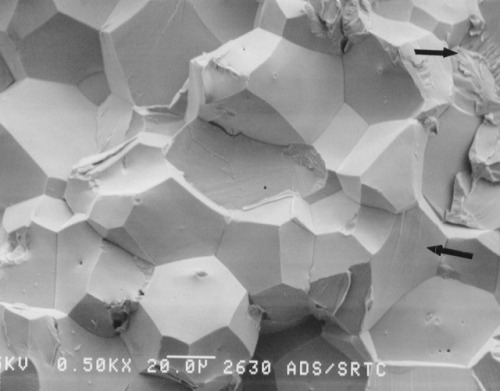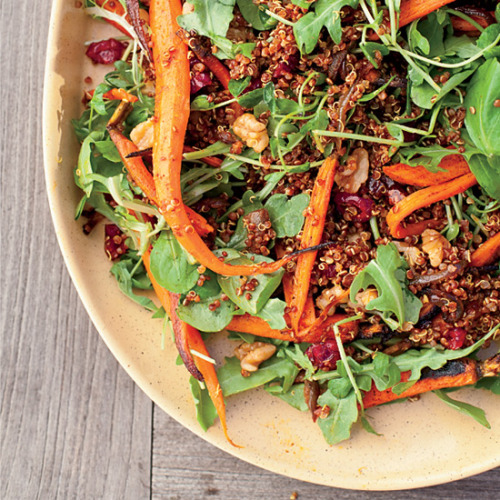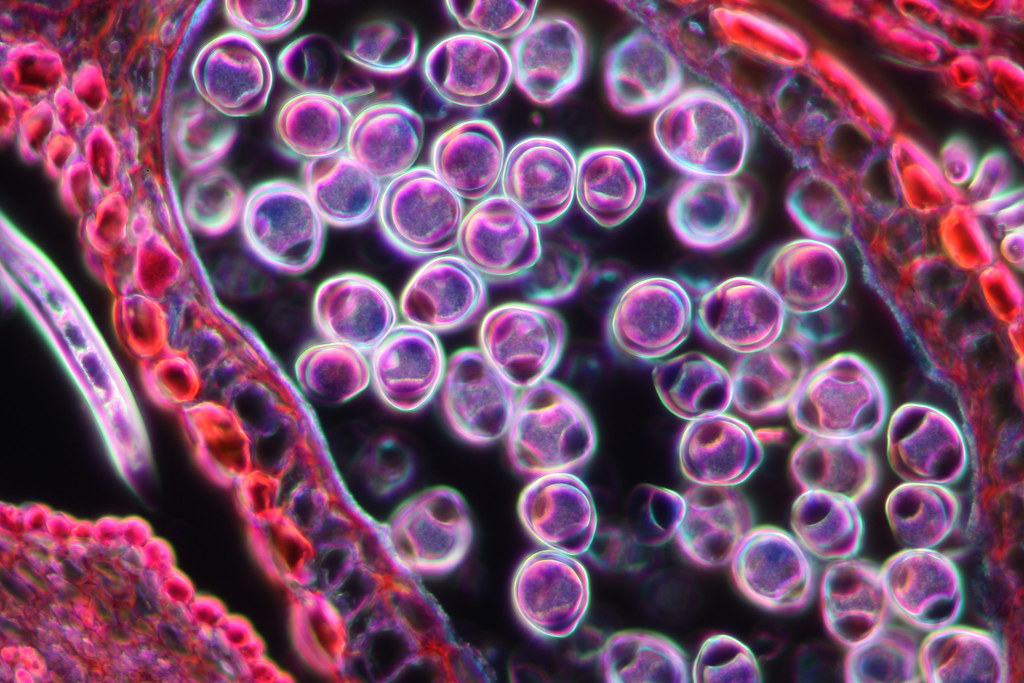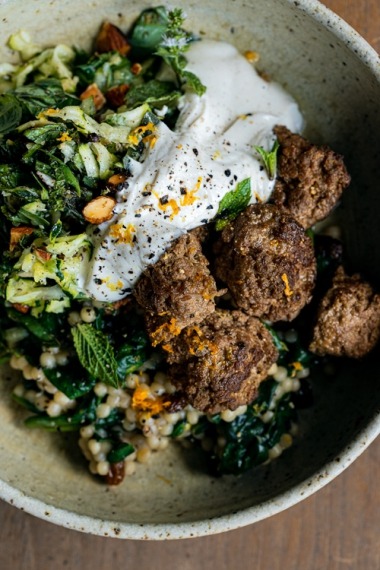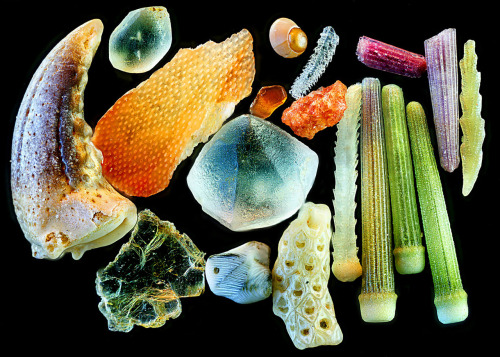#grains
Researchers present new strategy for extending ductility in a single-phase alloy
Simultaneous high strength and large ductility are always desirable for metallic materials. However, while the strength of metals and alloys can be easily increased by five to 15 times through simple plastic deformation or grain refinement down to the nano-scale, the gain in strength is usually accompanied by a drastic loss of uniform ductility. Ductility depends strongly on the work hardening ability, which becomes weak in materials with high strength, especially in a single-phase material.
Publishing online in PNAS, the research group of Prof. WU Xiaolei at the Chinese Academy of Sciences, in collaboration with Prof. En Ma at Johns Hopkins University, U.S., have demonstrated a strategy for exploiting a dynamically reinforced multilevel heterogeneous grain structure (HGS). They demonstrated the behavior of such an HGS using the face-centered-cubic CrCoNi medium-entropy alloy (MEA) as a model system.
Back stress hardening is usually not obvious in single-phase homogeneous grains. To overcome this, the scientists purposely created an unusually heterogeneous grain structure. They took advantage of the low stacking fault energy of the MEA, which facilitates the generation of twinned nano-grains and stacking faults during tensile straining, dynamically reinforcing the heterogeneity on the fly.
Post link
A Almonds & Nuts
Crunch for crunch, almonds are one of the best sources of alpha-tocopherol vitamin E – the form that’s best absorbed by your body. That matters to your muscles because “vitamin E is a potent antioxidant that can help prevent free-radical damage after heavy workouts,” says Jeff Volek, Ph.D. And the fewer hits taken from free radicals, the faster your muscles will recover from a workout and start growing.
B Beans & Legumes
Black, lima, pinto, navy – you pick it. They’re all low in fat, and they’re packed with protein, fiber, and iron – nutrients crucial for building muscle and losing weight. Gastrointestinal disadvantages notwithstanding, they serve as one of the key members of the Abs Diet cabinet because of all their nutritional power. In fact, if you can replace a meat-heavy dish with a bean-heavy dish a couple of times a week, you’ll be lopping a lot of saturated fat out of your diet and replacing it with higher amounts of fibe
S Spinach & Veggies
These Powerfoods pack superpowers thanks to their high nutrient content – vitamins including A, C, and K; folate; beta-carotene; minerals including calcium and magnesium; fiber; and antioxidants. They help neutralize age-advancing free radicals, and the fiber content helps fill you up without loading you up with calories.
D Dairy
Dairy gets so much good press for strengthening bones that it garners little attention for all the other stuff it does, such as help you shed pounds. Low-fat yogurt, cheeses, and other dairy products can play a key role in your diet. Look to milk as your major source of calcium. Liquids take up lots of room in your stomach, so your brain gets the signal that you’re full
I Instant Oatmeal
Oatmeal is the Jessica Alba of your pantry: It’s a perfect 10. You can eat it at breakfast to propel you through sluggish mornings, a couple of hours before a workout to feel fully energized by the time you hit the weights, or at night to avoid a late-night binge. Oatmeal contains soluble fiber, meaning that it attracts fluid and stays in your stomach longer than insoluble fiber (like vegetables). Soluble fiber is thought to reduce blood cholesterol by binding with digestive acids made from cholesterol and sending them out of your body.
E Eggs
The protein found in eggs has the highest “biological value” of protein – a measure of how well it supports your body’s protein need – of any food. In other words, the protein in eggs is more effective at building muscle than protein from other sources, even milk and beef. Eggs also contain vitamin B12, which is necessary for fat breakdown. For a long time, eggs were considered pure evil, because just two eggs contain enough cholesterol to put you over your daily recommended value. However, more and more research shows that eating an egg or two a day will not raise your cholesterol levels.
T Turkey & Lean Meat
A classic muscle-building nutrient, protein is the base of any solid diet plan. Turkey breast is one of the leanest meats you’ll find, and it packs nearly one-third of your daily requirements of niacin and vitamin B6. Dark meat, if you prefer, has lots of zinc and iron.
P Peanut Butter
Yes, PB has its disadvantages: It’s high in calories, and it doesn’t go over well when you order it in four-star restaurants. But it’s packed with those heart-healthy monounsaturated fats that can increase your body’s production of testosterone, which can help your muscles grow and your fat melt.
O Olive Oil
Sure, you could oil up your chest and arms and strike a pose, but it works better if you eat the stuff. “The monounsaturated fat in olive oil appears to act as an anticatabolic nutrient,” says Doug Kalman, R.D., director of nutrition at Miami Research Associates. In other words, it prevents muscle breakdown by lowering levels of a sinister cellular protein called tumor necrosis factor-a, which is linked with muscle wasting and weakness (kind of like watchingThe View).
W Whole Grains
There’s only so long a person can survive on an all-protein diet or an all-salad diet or an all-anything diet. You crave carbohydrates because your body needs them. The key is to eat the ones that have been the least processed – carbs that still have all their heart-healthy, belly-busting fiber intact.
E Extra-Protein
Whole foods such as fruits and veggies are key, but if you add refined whey protein powder to your meal – in a smoothie, for instance – you may very well have created the most powerful fat-burning meal possible. Whey protein is a high-quality protein that contains essential amino acids that build muscle and burn fat. But it’s especially effective because it has the highest amount of protein for the fewest number of calories, making it fat’s kryptonite.
R Raspberries & Berries
Berries carry powerful levels of antioxidants: all-purpose compounds that help your body fight heart disease and cancer. The berries’ flavonoids may also help your eyesight, balance, coordination, and short-term memory. One cup of raspberries packs 6 grams of fiber and more than half of your daily requirement of vitamin C.
Cooking Guide for Whole Grains
Millet
25 minutes cooking time.
1 cup dry grain to 2 cups water. (Some use 3 cups water to 1 cup grain.)
Yields 3 – 3 ½ cups.
Quinoa
15-20 minutes cooking time.
1 cup dry grain to 2 cups water.
Yields 3 – 3 ½ cups.
Brown Rice(long-grain)
40-45 minutes cooking time.
1 cup dry grain to 2 cups water.
Yields 3 cups.
Brown Rice(short/medium grain)
45-50 minutes cooking time.
1 cup dry grain to 2 cups water.
Yields 3 cups.
Brown Basmati Rice
30-45 minutes cooking time.
1 cup dry grain to 2 cups water.
Yields 3 ½ cups.
Wild Rice
40 minutes cooking time.
1 cup dry grain to 2 ½ cups water.
Yields 3 cups.
Approx. 15 minutes cooking time.
1 cup dry grain to 1 cup water.
Boil water, add cous-cous, simmer for a few minutes then shut off heat. Let stand for several minutes with the lid on, then fluff with a fork. Cover again for another five minutes.
Kasha (buckwheat groats)
20 minutes cooking time.
1 cup dry grain to 2 cups water.
Yields 2 cups.
Amaranth
20-25 minutes cooking time.
1 cup dry grain to 2 ½ – 3 cups water.
Yields 3 cups.
Has a slightly nutty flavor and a soft, sticky consistency when cooked. Gluten-free.
Pearled Barley
50-60 minutes cooking time.
1 cup dry grain to 2 ½ cups water.
Yields 3 ½ cups of cooked grain.
A hearty grain good for soups, stews and cold salads.
Kamut
100+ minutes cooking time.
1 cup dry grain to 3 cups water.
Yields 3 cups.
Bulgur Wheat
Can be reconstituted in boiling water.
1 cup dry grain to 2 cups water.
Yields 2 ½ – 3 cups.
Cover bowl and let sit for 60 minutes or until water is completely absorbed by grain. Used to make Tabouli.
ViaCare2
Pollen grains, darkfield microscopy by ZEISS Microscopy
Via Flickr:
Darkfield microscopy of pollen grains, 400x with ZEISS Axio Lab.A1 www.zeiss.com/axiolab
We’ve all heard the adage ’eat breakfast like a king, lunch like a prince and dinner like a pauper’. Well, according to the research, this axiom may just be your ticket to avoiding dreaded holiday weight-gain. Smarter food choices while vacationing are vital if you don’t want your months of hard-work, dieting and exercise to vanish before your eyes quicker than you can say ’insulin spike’. This means knowing how to metabolically set your body up for success to avoid excess weight-gain as you sight-see, shop and take in the atmosphere (& food) of the exotic locale you’ve chosen as your destination.
The Buffet Breakfast … So Many Choices: Which One is Right?
The buffet breakfast is a popular choice for many travelers as it provides the convenience of a ready meal in place of an often frustrating search for an appropriate restaurant in the early hours of dawn. As you stand taking in the sights in the dining area you’ll most likely see toast, pastries, cereals, fruits, jams & honey - the healthy (?) alternative to sausages, boiled & fried eggs, bacon and cheese. However, before you take a step towards the cereal bar to avoid the artery clogging grease (or so medical orthodoxy would have you believe) of a bacon & egg breakfast, I would urge you to reconsider.
Your first meal sets up the metabolism for the rest of the day, making it easier to burn off other foods. Consumption of a high fat meal upon waking (such as those bacon, eggs & sausages you’re about to pass up) is associated with increased ability to respond appropriately to carbohydrate meals eaten later in the day. On the other hand, eating a high carbohydrate morning meal ‘fixes’ the metabolism toward JUST utilizing carbohydrates and impairs the body’s ability to adjust metabolism toward fat usage later that day.
In the study, the mice fed a high-fat breakfast remained healthy, but those given a carb-rich breakfast followed by fatty meals closer to the end of their waking cycle gained weight and had trouble processing sugar, thereby increasing their risk of diabetes. Blood tests also raises issues with markers of heart disease and stroke.
Take-Away:
While the findings of Bray et al. (2010) certainly do not suggest that the consumption of a high-fat meal entitles you to proceed by consuming unlimited quantities of refined sugars & processed foods during the remainder of the day. However, it does give us some guidance into the ideal breakfast food. So, if you want to save your waistline (& your cardiometabolic markers) on your next holiday - take the bacon, eggs, sausages and cheese over the cereal, muesli and fruit and preserve the hard work and dedication you’ve spent on reaching your current health & fitness goals.

Reference:
Bray, M.S., et al. (2010). Time-of-day-dependent dietary fat consumption influences multiple cardiometabolic syndrome parameters in mice. Int J Obes, 34(11), 1589-1598.


